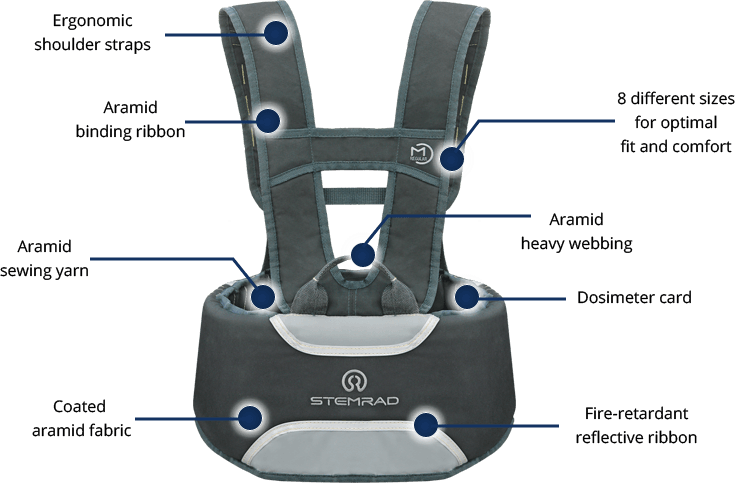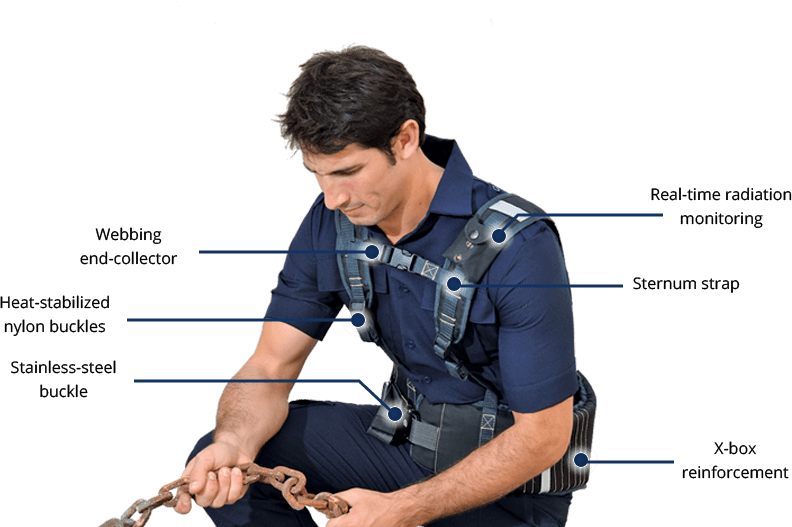Shielding Reactor Personnel from Gamma Radiation
In the press
Our Users
Emergency response personnel at nuclear reactors employ time and distance to keep their doses as low as reasonably achievable (ALARA). Yet, in emergency situations these brave individuals may be inadvertently exposed to higher doses than planned. In such cases, the third leg of ALARA – shielding – should be employed. While being adequately protected from alpha and beta radiation, up until the advent of the StemRad 360 Gamma, there was no meaningful shielding from gamma radiation.

High Dose Reactor Activities

Aberrant Dose Readings

Detection Compromised

Emergency Response
In the event of exposure to high doses of gamma radiation, the leading cause of death is damage to the individual’s bone marrow, the body’s blood factory. In the event of protracted exposures to low doses, cancer may emerge in radiation- sensitive organs. The 360 Gamma selectively and effectively shields the bone marrow and other stem cell rich organs in the abdominal and pelvic regions such as the ovaries, colon and bladder. This is the only way to provide meaningful protection while remaining mobile. Whole body solutions offer little to no protection from penetrating radiation such as gamma rays as they would have to weigh a quarter of a ton to do so. Accordingly, the OECD Nuclear Energy Agency, stated the following in it’s 2015 report on Severe Accident Management:
“While whole body shielding is inherently heavy, partial body shielding is lighter in weight and selectively shields tissues of increased radiosensitivity (i.e. bone marrow) with substantial amounts of shielding material to protect hematopoietic functions; therefore, potentially preventing the acute health effects of exposure to gamma radiation (i.e. Acute Radiation Syndrome -ARS)”.
Worn around the pelvic area and supported by an ergonomic harness, the 360 Gamma enables both mobility and protection so that nuclear workers are able to perform their work safely and efficiently. Whether it’s a single wayward radiation spike during maintenance activity or an intricate terrorist plot or accidental meltdown, the nuclear industry faces a variety of internal and external threats that could result in high dose exposure to gamma radiation. The StemRad 360 Gamma radiation shield will protect nuclear reactor personnel should catastrophe strike.
“ StemRad has developed radiation protection for the day prevention fails. ”
Four Star Admiral James Ellis, former CEO of INPO
MADE FOR REACTOR PERSONNEL

Rapidly Deployable
From onsite or regional
FLEX dome inventories

Tested Against Cs-137
Effective against
high-energy gammas

Highly Ergonomic
Compatible with current PPE
Complements HAZMAT suits

Full Mobility
Positioned on the body’s
center of gravity

ALARA
Increased ROI on high-dose
critical path tasks

